
Description and causes of meibomitis of the lower and upper eyelids. Main symptoms and diagnosis. Methods of treatment, prevention.
The content of the article:- What is meibomite
- Reasons for development
- Symptoms and diagnosis
- Treatment options
- Medicines
- Folk remedies
- Surgical intervention
- Prevention measures
Meibomitis is a pathological process that is accompanied by inflammation of the meibomian glands. Manifests itself in the form of hyperemia, edema, pain, and purulent discharge. An accurate diagnosis is made after bio- and microscopic examinations. Treatment is carried out using conservative as well as radical methods. At the first signs of illness, it is recommended to refrain from self-medication and seek advice from an ophthalmologist.
What is meibomite?
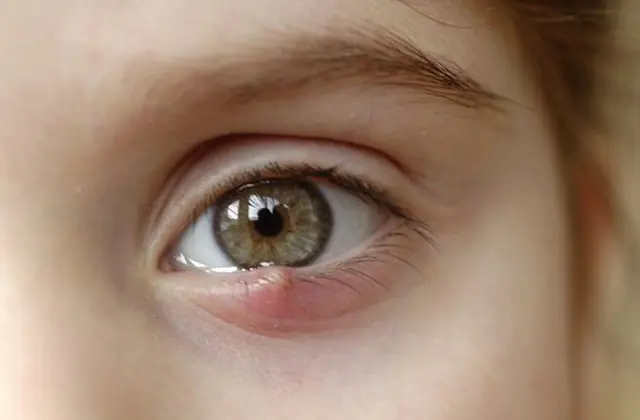
In the photo there is a meibomite of the lower eyelid
The Meibomian glands take part in the formation of tear fluid and sebaceous secretion, which is part of it. At the same time, an oily layer is formed on the surface of the eye, which protects the organs of vision from drying out, excessive overheating and hypothermia. Meibomitis of the eyelid is an acute inflammatory process that affects the meibomian glands located in the thickness of the eyelids. In most cases, meibomitis of the upper eyelid is diagnosed. This is due to the fact that up to 40 glands are localized in the upper eyelids, and up to 30 in the lower eyelids.
Female representatives are at risk. In children, the disease often manifests itself during puberty, with changes in hormonal levels, as well as with a decrease in immunity. The disease often recurs and worsens, mainly in patients of older age groups.
The prognosis in most cases is favorable, depending on how accurately the patient follows the doctor’s recommendations. Duration of therapy is up to 2 weeks.
The most common complications of meibomitis:
- Abscess - prolonged inflammation leads to the formation of cavities that are filled with purulent contents. Requires surgery.
- Blepharitis can occur in an allergic, viral, or fungal form.
- The transformation of acute meibomitis into a chronic form leads to impaired visual acuity, a feeling of discomfort, and frequent relapses of the disease.
Untimely, poor-quality therapy is fraught with keratoconjunctivitis, orbital cellulitis, orbital vein thrombosis, and meningitis. In severe cases of the pathological process, significant loss of vision, sepsis (systemic blood infection), and inflammation of the membranes of the brain are possible.
Reasons for the development of meibomite
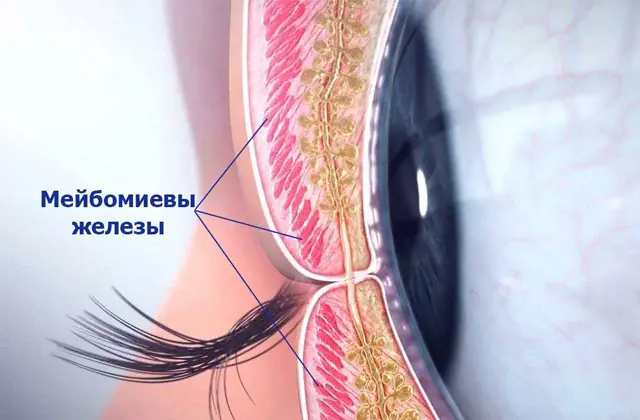
In the vast majority of cases, the causative agent of the pathological process is the Demodex mite. Meibomitis occurs when personal hygiene rules are not observed, or infection with staphylococcal infection occurs. Pathogens produce toxic substances that break down the protective lipid layer and tear fluid.
The disease is observed in people who tend to use contact lenses after their expiration date and do not follow the rules of personal hygiene. Meibomitis can be aggravated by regular, long-term stay in dirty, dusty rooms.
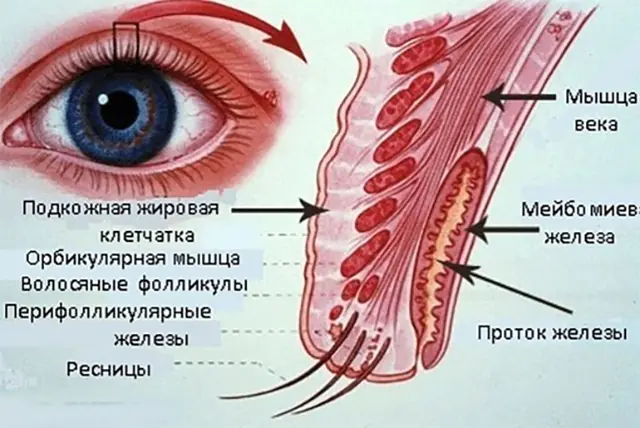
Triggers for the development of the inflammatory process are improper use of contact lenses, exposure to regular hypothermia. The disease may be associated with hyperfunction of the glands that synthesize excess amounts of sebaceous secretion.
People at risk include those with a history of:
- acne;
- seborrheic dermatitis;
- keratoconjunctivitis;
- chronic irritation of the organs of vision (smoke, smog, dust, allergens);
- rosacea;
- diabetes;
- hormonal dysfunction;
- disruption of the functioning of the gastrointestinal tract;
- change in the composition of the secretion of the conjunctival glands.
When the functioning of the immune system is weakened, meibomitis has a relapsing course. The acute form of the disease can transform into a chronic form (called “chalazion”). Any pathology in which hypersecretion and dysfunction of the meibomian glands is observed can provoke damage to the upper or lower eyelids.
Symptoms and diagnosis of meibomitis
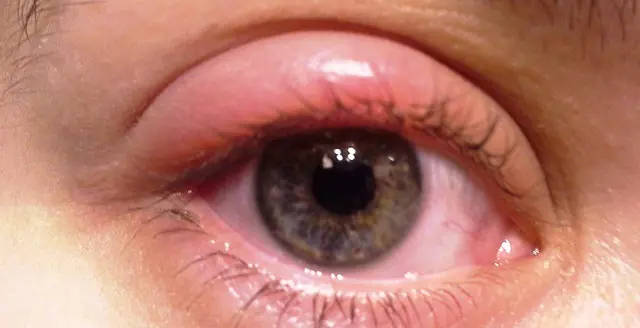
Acute and chronic course of the pathological process is observed. Damage to both eyelids at once - lower and upper. As the pathological process progresses, the lymph nodes enlarge and visual acuity decreases. Yellow and gray crusts form on the eyelashes.
In the acute form, the following symptoms of meibomitis occur: hyperemia, pain, complaints of discomfort and the sensation of a foreign body in the eyes. Due to the accumulation of purulent contents on the inner surface of the eyelids, severe swelling is visible. In severe cases of the disease, purulent discharge from the eyes is formed, followed by the formation of scar tissue, and body temperature rises.
In the chronic form of the disease, the eyelids thicken, and complaints arise about the constant development of itching and burning. Seals painted yellow are visible on their inner surface. The main complication of chronic meibomitis is conjunctivitis, which progresses with prolonged irritation of the conjunctiva.
To confirm the diagnosis of meibomitis, a face-to-face examination of the patient is performed, as well as additional studies:
- Biomicroscopy of the eyes using a slit lamp allows you to determine the dilation of the glands.
- Using microscopic and cultural studies, the causative agent of the pathological process is identified.
- Eyelashes are examined for possible detection of Demodex mites.
- Allergy tests and laboratory tests of urine and blood are also recommended.
The disease is often confused with barley, but these are different pathologies. Barley affects the outer areas of the eyelids, while meibomite is localized in their thickness. The decision on how to treat meibomitis is made by an ophthalmologist based on the results of a comprehensive examination. A concomitant consultation with an immunologist or infectious disease specialist may be required.
Treatment methods for meibomitis
The doctor selects a treatment regimen for meibomitis individually for each patient, taking into account the clinical picture, concomitant diseases of the visual organs, and the individual characteristics of the body. Preference is given to conservative methods: medications, traditional medicine. The use of dry heat and a course of UHF sessions are also shown. The application of wet compresses when warming up is not recommended, since when blood flow increases, the inflammatory process spreads to surrounding tissues. Therapy is carried out until the patient feels relief.
Medicines for meibomitis
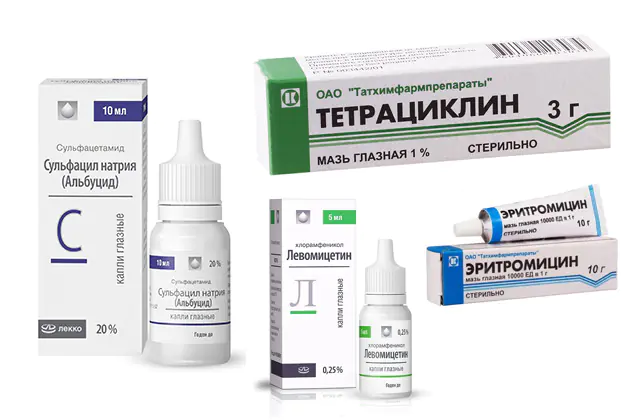
The general treatment regimen for meibomitis includes the use of the following drugs:
- Albucid. A product with antimicrobial and bacteriostatic effects in the form of eye drops. Drops for meibomitis affect gram-positive and gram-negative microorganisms. They penetrate into the ocular fluid and tissues, and in case of inflamed conjunctiva - into the general bloodstream. The drug is approved for use in patients of all age groups: from newborns to the elderly. Helps cope with purulent ulcers, inflammation of the conjunctiva, blepharitis, and pathologies of gonorrheal origin. The medicine is instilled 2-3 drops up to 4-5 times a day. The duration of the course of therapy is determined by the doctor individually. The cost of Albucid is 70 rubles. (30 UAH). The medicine has no analogues.
- Tetracycline eye ointment. A product based on tetracycline, lanolin, petroleum jelly. An antibacterial drug with a bacteriostatic effect that affects the DNA of bacterial cells. When used topically, it does not penetrate into the general bloodstream and is well tolerated by patients. Helps fight the causes of meibomitis and its possible complications: conjunctivitis, blepharitis, trachoma. For meibomitis, it is recommended to place a strip of ointment behind the eyelid every evening until the manifestations of the inflammatory process decrease. The duration of the course of therapy is until the patient’s well-being normalizes. After applying the ointment, the clarity of vision decreases. If after 72 hours there are no first improvements, the use of the medicine is discontinued and the treatment regimen for meibomitis of the eyelid is reviewed. The price is 45-490 rubles. (20-75 UAH), depending on the manufacturer. There are no analogues.
- Levomycetin eye drops. This is a bacteriostatic antibacterial medicine with a broad spectrum of action. Prescribed when tetracycline and penicillin are ineffective. Accumulates in the intraocular fluid and penetrates into the general bloodstream. It is prescribed with extreme caution to patients with psoriasis, eczema, fungal pathologies, during pregnancy and breastfeeding, and in early childhood. It is recommended to instill the drug every 2-4 hours, 1-2 drops. Not prescribed in conjunction with the following medications: erythromycin, cytostatics, clindamycin, lincomycin, penicillin, cephalosporins. The cost is 40 rubles. (16 UAH) There are no analogues.
- Erythromycin ophthalmic ointment. An antibacterial agent from the macrolide group that helps cope with ulcers and infections. It is recommended to apply the ointment behind the eyelid three times a day. The duration of therapy is no more than 2 weeks. Increases the effectiveness of corticosteroids, incompatible with penicillins and cephalosporins. The drug is not used in case of individual intolerance to the active component, severe impairment of the functioning of the kidneys and liver, or a history of jaundice. The cost is 100 rubles. (40 rub.). There are no exact structural analogues.
If local therapy is ineffective, the ophthalmologist washes the glands using a special cannula.
Folk remedies against meibomitis
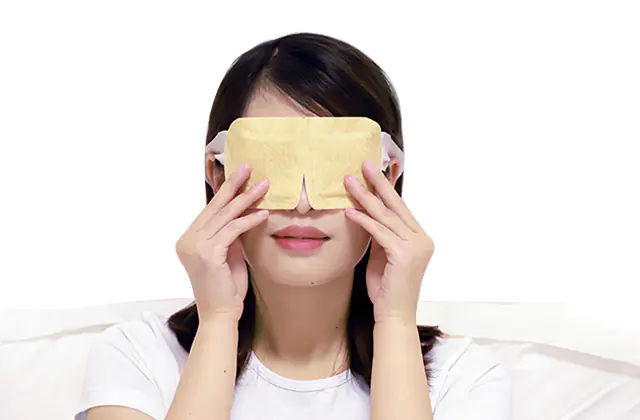
Traditional recipes are an auxiliary method of treating meibomitis, which alleviates symptoms and prevents the development of complications.
Dry heat is considered effective, helping in the initial stages of disease development and fighting inflammation:
- Place flax seeds or sea salt into a woven bag and heat it in a frying pan. Apply to the affected eyelid overnight.
- Plantain leaves are washed, dried, and wrapped in an egg. Apply to the affected area twice a day.
- To treat meibomitis, you can also use boiled potatoes in their jackets, which are applied up to 4-6 times a day.
To reduce the severity of inflammatory reactions, use the following recipes:
- Nettle, birch and chamomile are mixed in equal parts, poured with boiling water, and left for 4 hours. Take 50 ml 3-4 times a day with meals.
- To reduce inflammation, you can also use the following healing mixture: elderberry inflorescences, burdock, walnut. Fill with water, boil in a water bath for 20 minutes, cool. Take 1/2 cup twice a day.
- Mix 10 g of calendula with chamomile and celandine, pour boiling water over it, leave for 2 hours. Strain, moisten cotton pads with the resulting infusion and apply to the affected eye up to 4 times a day. The resulting liquid can be washed in the morning and evening.
- Dilute aloe juice with water in equal proportions and use it to prepare lotions. Carry out the procedure every 2 hours until inflammation decreases.
Before starting treatment for meibomitis at home, it is recommended to consult a doctor. If there is ineffectiveness and symptoms worsen, it is recommended to review the treatment regimen and supplement it with effective antibacterial and anti-inflammatory drugs.
Surgical intervention for meibomitis
In case of extensive inflammation, the doctor opens the ulcers. The operation is performed on an outpatient basis using local anesthetics. The doctor opens the abscesses in the direction from the conjunctival region to the main excretory ducts of the glands. After this, the outflow of pathogenic contents is restored.
Surgery is also performed for chronic meibomitis to eliminate inflamed areas. Subsequent histological examination is a mandatory procedure that allows us to determine the nature of the formation. It is contraindicated to remove ulcers on your own, as this can lead to secondary infection.
Measures to prevent meibomitis

In the photo there are 5 products that strengthen the immune system
To prevent the development of the inflammatory process, it is recommended to follow the rules of personal hygiene and not touch your eyes with unwashed hands.
The state of the immune system is a decisive factor that influences the number of exacerbations of eye meibomitis. To restore immunity, it is necessary to promptly identify and sanitize foci of chronic infection, and pay attention to chronic pathologies.
Also, to strengthen the immune system, you should adjust your diet, identify and promptly compensate for nutrient deficiencies, take vitamin complexes as recommended by your doctor, and introduce moderate physical activity.
Exacerbation of meibomitis is observed with hypothermia and exposure to infectious pathogens. At the first signs of a violation, it is recommended to refrain from independently selecting medications and seek advice from an experienced specialist.
In addition, for the prevention of meibomitis it is important:
- use sunglasses;
- promptly treat infectious pathologies of the visual organs;
- protect eyes from prolonged exposure to cold, dry air;
- use high-quality cosmetics and care products;
- monitor blood glucose levels;
- massage the eyelids for meibomitis and to prevent its development.
Video about what meibomitis is, what are the causes and symptoms of the disease:



